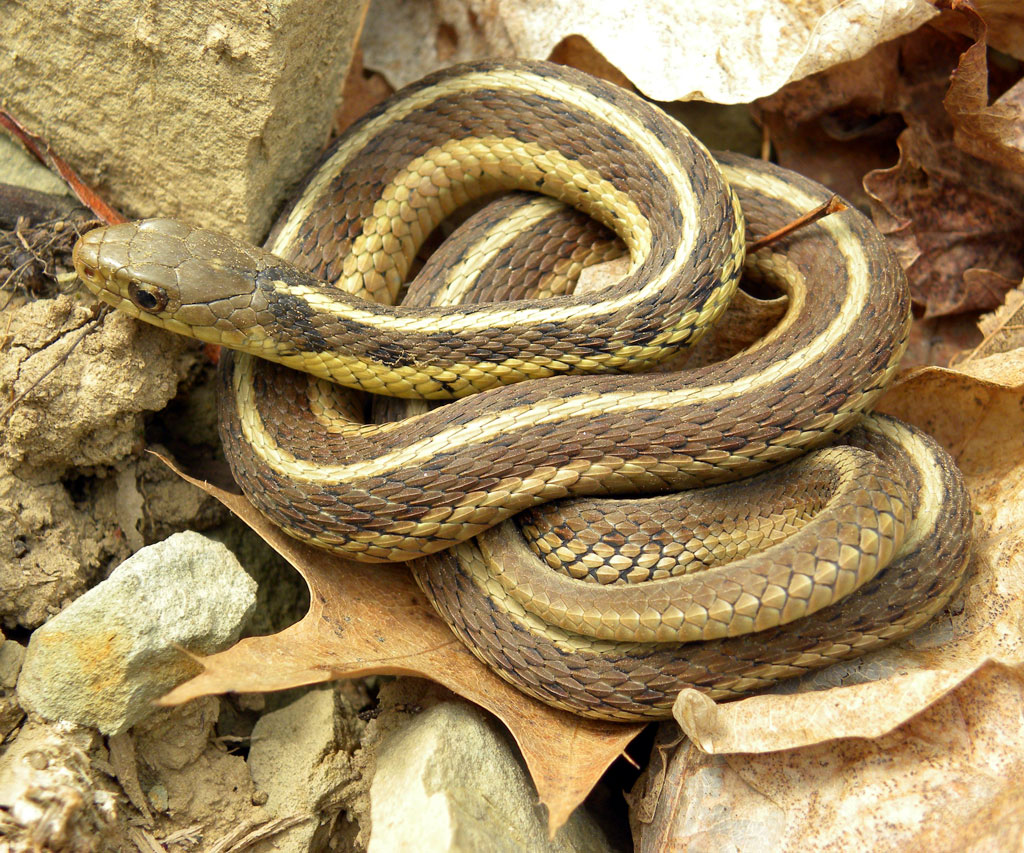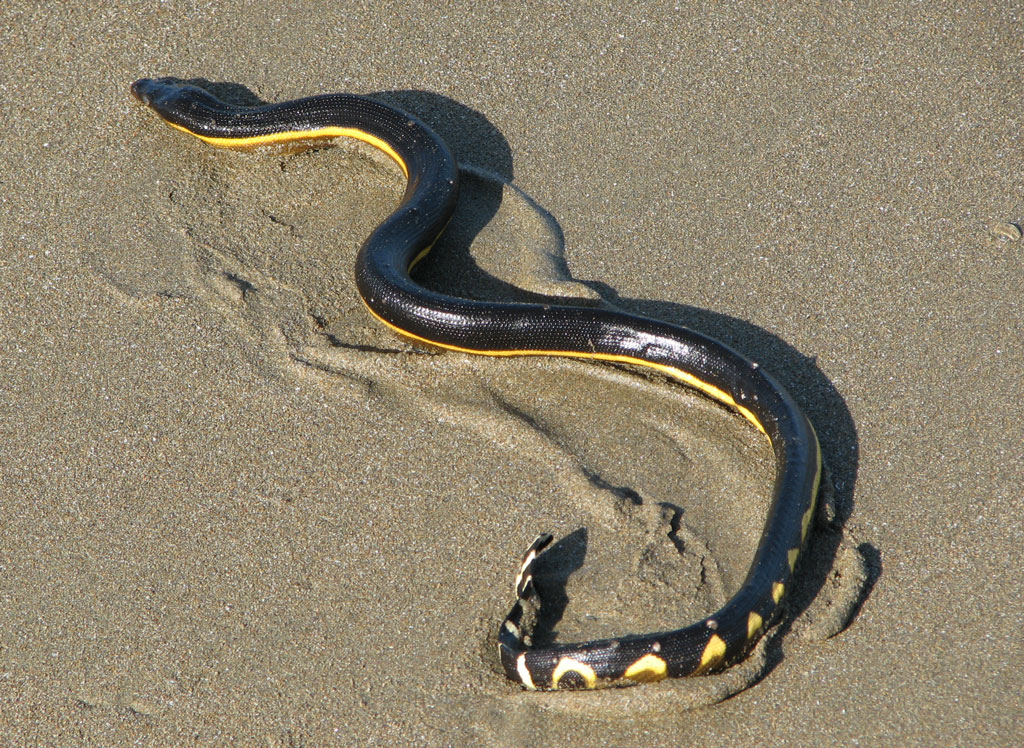Alaska and Hawaii are the only states in the U.S. that have no reported cases of snake sightings. Hawaii, the island state, is separated from the mainland by the Pacific Ocean. Like many other Islands, Hawaii is largely snake-free due to its isolation from the mainland. It should be noted that Islands with proximity to the mainland may not be free from swimming snakes.
Alaska is a very cold state in the Northwest corner of the U.S.A. With 17 of the USA’s 20 highest peaks located in Alaska alone and having more active glaciers and ice fields than the rest of the world combined, Alaska is the kind of state where you expect to see the smallest number of reptiles and amphibians because of their cold-blooded nature.
Apart from Alaska, there is a host of other places with similar climatic conditions that makes them inhabitable for snake: there are no native snakes in the northernmost part of Sweden, Russia, Finland, and Canada. There are no reptiles at all in the Arctic and Antarctica. The Vatican City also doesn’t have snakes and this is partly because it hardly has any wildlife at all besides birds.
These places have one major thing in common – their low temperature and humidity. This environment is not home to reptiles. People could bring snakes from other places to most of these places but there has to be a termperature-controlled environment.
Although some Islands do not have land snakes, large parts of the Pacific and the Indian Oceans are warm enough to harbor sea snakes. Small snakes from these oceans then move to Islands like Nauru, Tuvalu, and Kiribati, where they make their home.
Are there snakes in Alaska?
There are no native snakes in Alaska, however, there have been reported sightings of the common garter snake in Alaska.
Alaska is one of the coldest places in the world. It has some of the longest known summers and some of the shortest winters. These conditions make it uninhabitable for snakes.
Like all reptiles, snakes prefer to live in relatively warm areas. Reptiles are cold-blooded, meaning that they cannot regulate their internal body temperature. They typically lie in the sun to warm up and look for shade when they need to cool down.
Alaska is so cold that Alaskans don’t even own reptiles as pets. In the rare cases when people try to bring snakes into the state, they have to keep them in heated cages because of the cold.
Is the common Garter snake in Alaska?
Despite the rumors, there have been no confirmed sightings of a garter snake in Alaska.
That is not to say they don’t exist, it just has not been confirmed. There may yet be garter snakes in Alaska but the population is likely to be so small that there would rarely be human contact.

Garter snakes can also be found almost anywhere in the world, and are the most widely distributed snake species. Garter snakes are not as long as regular snakes, and their length ranges between 23-30 inches for adults.
Becasue of their adaptability, the garter snake is four times more likely to survive in cold places than other species.
That said, garter snakes are generally harmless. They feed mostly on fishes and are more active during the day. So, even if you ran into one in Alaska, you wouldn’t be in any danger.
Since most reptiles are cold-blooded and can not survive exposure to cold atmospheric conditions, reptiles probably do not consider Alaska habitable. Down south in Alaska, trees can help in sighting Garter snakes as they live on them. Apart from the garter snake, no other snake species can be found in Alaska.
What other dangerous animals are in Alaska?
Alaska state may not have a lot of dangerous reptiles but it is not free from dangerous critters either. Black bears are reported to have killed more people than any other animal in the state. The Polar bear comes a close second. Wolverines, Moose, Canadian lynx, Wolves, Walrus, Stellar sea lions, Grizzly bears, and bald eagles complete the list of 10 dangerous creatures you can see in Alaska.
Are there snakes in Hawaii?
Hawaii like many other islands is snake-free and this is because it is segregated from the mainland by the ocean. It is illegal to have snakes in Hawaii.
Although some Islands are void of land snakes, large parts of the Pacific and the Indian Oceans are warm enough to harbor sea snakes. Small snakes from these oceans then move to Islands like Nauru, Tuvalu, and Kiribati, where they make them their home.
Are there snakes in Ireland?
Historically, there are no snakes in Ireland. In recent times, there have been cases of people importing snakes from other parts of the world.
If you’ve ever heard the story of St. Patrick driving the snakes out of Ireland, that is actually a metaphor for paganism because there never were snakes in Ireland. St. Patrick was born in Britain in the 4th century and was captured and taken to Ireland as a slave by Irish raiders. He eventually escaped Ireland, became a Catholic priest, and returned to the island to teach them about Christianity. He spread the religion throughout the country and converted many of the druids and pagans, who are thought to be symbolized by the snake.
Are there snakes in New Zealand?
New Zealand is a cluster of islands that have no recognized native snakes. Like Garter snakes in Alaska, there are Sea snakes or marine snakes in the Northernmost parts of New Zealand. The Yellow-bellied sea snake is also found in this region. These reptiles adapt to this relatively warm environment and are generally limited to this area in the water. They find it extremely difficult to travel down south due to New Zealand’s harsh waters.

New Zealand’s government declared the country snake-free and made a law that disallowed them, even in zoos for exhibitions. This is typically news to most people since the country borders Australia, which is well-known for its venomous snakes.
What places have a high snake population?
Ilha da Queimada Grande, Brazil has the highest number of reptiles in the world. The island, also known as „Snake Island” by the British, is regarded as the world’s most dangerous place. The islanders have sighted hundreds of snake species over the years. It is so dangerous that the Brazillian government has made it illegal to visit the island. The local islanders have also been relocated to protect them.
Africa and Australia are homes to the most deadly snakes in the world. The long reptiles live in hot parts of the region. Australia, as a country, has the most deadly snakes in the world. Mexico, Brazil, Guinea, Indonesia, and Ecuador are countries with a large population of snakes. In these countries, the population density of reptiles differs within each country and across states and seasons. Reptile sightings are generally low in winter and less so in summer.
Are snakes dangerous?
Yes, snakes can be very dangerous – though not all of them are. There are harmless varieties of snakes that only feed on small animals and whose only danger to humans are their small teeth. However there are also very deadly venomous snakes that can easily kill a person with a single bite. Snakes are found in almost every part of the world, and there are about 3,000 species of them. About 20% of all the snake species are venomous.
The Saw-scaled snake is regarded as the most dangerous because it kills the most people every year. However, it is not the most venomous. More poisonous snakes like the western taipan can kill an adult human with a bite in a few minutes.
Venomous snakes release a toxic substance venom into the bloodstream of their victims after biting them. This venom leaves the victim paralyzed and may kill the victim in many cases.
So when next you’re planning your getaway trip to Alaska, you should not only note that while you may not run into a snake, there are more dangerous animals present there.

Lydia King is a huge animal lover and has always been fascinated with learning about the animal kingdom. She enjoys writing about anything animal related from scientific information about rare species to animal references in pop culture.












